
EDITOR’S NOTE: This post is part of the Expert Exchange series, an editorially directed and expert-driven platform for information and discussion around leading-edge building science principles and projects. The fourth quarter topic—made possible with support from our sponsor*, Rockwool—is “Choosing Products and Materials for a Green Home.” The series will culminate with a webinar panel discussion among contributing experts on Dec. 7 at 6pm ET. Click to register.
Increasing insulation in building assemblies contributes to greater thermal comfort for occupants. However, if we respond to the desire for increased insulation with petroleum-based products, we overlook a project’s impact on indoor air quality and knowingly contribute to a larger carbon footprint. While it can be said there are situations where foam insulation is the answer, such as in renovations where space is tight, or sub-grade conditions, we are finding more alternatives even in these restricted instances.
While foam will continue to have a place in the building industry for some time, we have found safe and healthy alternatives for our building projects at Love|Schack Architecture. We typically go beyond code minimums for energy performance and see the benefits of carefully considering the materials within. In our cold northern climate (zone 6), we design thick walls and roof assemblies to increase insulation—typically 12 to 14 in. for walls, often more for roofs.
In favor of prefab panels
We commonly employ prefabricated building systems, as they can offer good cost control and are appropriate for remote or rural building sites, where finding labor is challenging. We have sourced prefab walls, roofs, and floors that are filled with cellulose, and also with straw. While these products weigh more than a foam system, and this does impact delivery costs, we find the systems equivalent or better in thermal performance than site-built assemblies with conventional materials; and they are healthier for the crew that installs them.
At Love|Schack, we’re driven to design Passive Houses with high-performance enclosures using more natural products from renewable sources, and that have lower embodied energy. We aim to provide homeowners with optimal thermal comfort without the massive carbon footprint that a conventional building is responsible for.
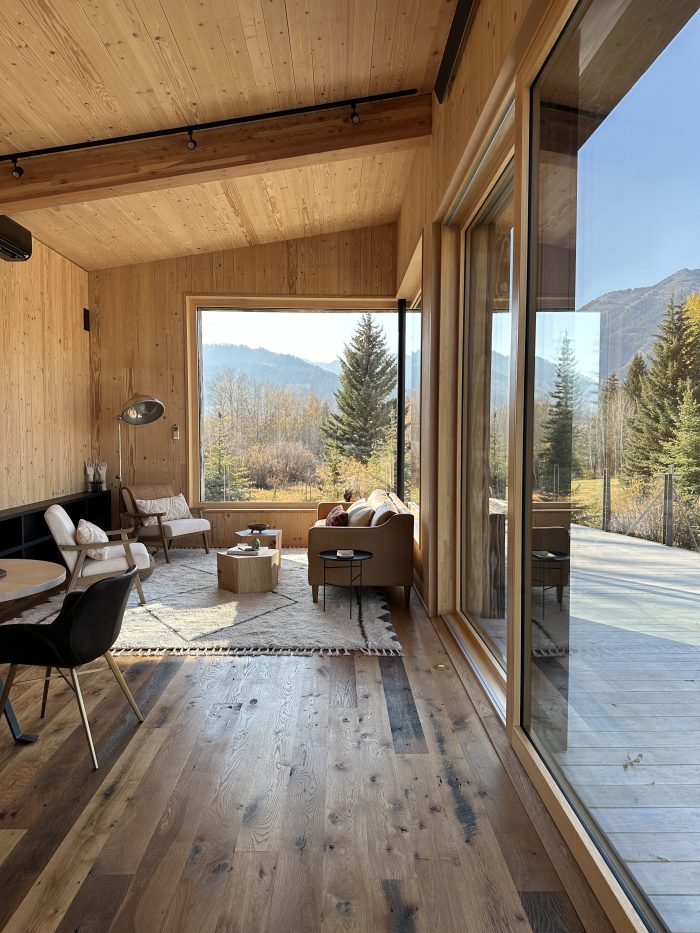
When the opportunity to design with a cross-laminated-timber (CLT) system presented itself for a project located in Wilson, Wyoming, we felt it was important to use natural materials in the rest of the assemblies; and we explored the options that would help us minimize our environmental impact.
The depth of exterior insulation needed in the walls and roof for this climate was daunting; the conventional response would be rigid foam board. The solution we chose was Gutex compressed wood-fiber insulation wrapped around the structure exterior. While we had to source this product internationally, it will soon be available from North American suppliers, including TimberHP.
Preferred insulation materials
When designing with bio-based materials, understanding how the assembly will handle moisture is critical for a successful outcome. Overall, the goal is to avoid any chance that the air transfer from outside to inside will create moisture within the assembly—something that could cause serious deterioration, if not failure. With the use of smart membranes, vapor-open products, and details that allow bulk water to drain and assemblies to dry, we can confidently specify natural insulation materials in cold climates.
Topping our short list are four products that offer highly effective solutions on several levels, including moisture diffusion and increased water permeability. It should also be noted, they are highly dependent on paint, plaster, and other assembly detailing to achieve vapor diffusivity or high absorption rates.
- Straw bales are recyclable carbon sinks with an R-value of 40, making them eco-friendly yet vulnerable to moisture when left exposed, so proper detailing is necessary. Straw is also inexpensive, renewable, natural, local, and non-toxic, and ranges from an R-value of 2.38 to 0.94 per in. With proper installation and care, homeowners can expect fully functioning straw insulation for decades to come, saving money.
- Cellulose is breathable, acoustic-friendly, fire-retardant, and recyclable. It also insulates with little waste, minimizing end-of-life environmental impact. Loose-fill cellulose outperforms its fiberglass counterpart by 30%, reducing energy bills. An R-value of 3.5 helps reduce energy bills, and its embodied carbon is low.
- Hemp fiber is naturally hypoallergenic; hemp-based solutions offer safe, sustainable insulation from plant-based biomass with added health benefits. Hemp fiber is safe enough to touch and won’t slump, sag, or phase-shift. Hemp’s dimensionally stable R-value of 5, coupled with being a renewable, plant-based, carbon-storing natural fiber, earns it a clean-energy reputation.
- Wood fiberboard, with an R-value from 2.7 up to 3.8, is made from the by-product of wood processing, taking a waste product, combining it with a binder, and creating either loose fill or pressed boards. Like straw, wood fiberboard is fire-resistant due to its density. The flexible fiber boards can be installed on the exterior, without extra cutting necessary, as the edges have a tongue-and-groove style of joining.
It is an important part of our process to coordinate with our construction team on specifying these materials. As architects, we are placed in a position to advocate for materials that will meet the expectations of our clients, and understanding that there are legitimate alternatives is necessary to introduce new materials and methods to the process. While many of these materials seem unconventional in the U.S., they are common in international markets, and our industry is doing its best to raise awareness of these alternatives.
*Sponsors are not offered the opportunity to review articles before publication or to edit our authors’ words.
_______________________________________________________________________
Lindsay Schack is an architect and co-founder of Love Schack Architecture with offices in Bozeman, Montana; Driggs, Idaho; and Jackson, Wyoming.
Weekly Newsletter
Get building science and energy efficiency advice, plus special offers, in your inbox.

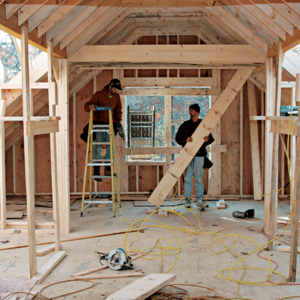

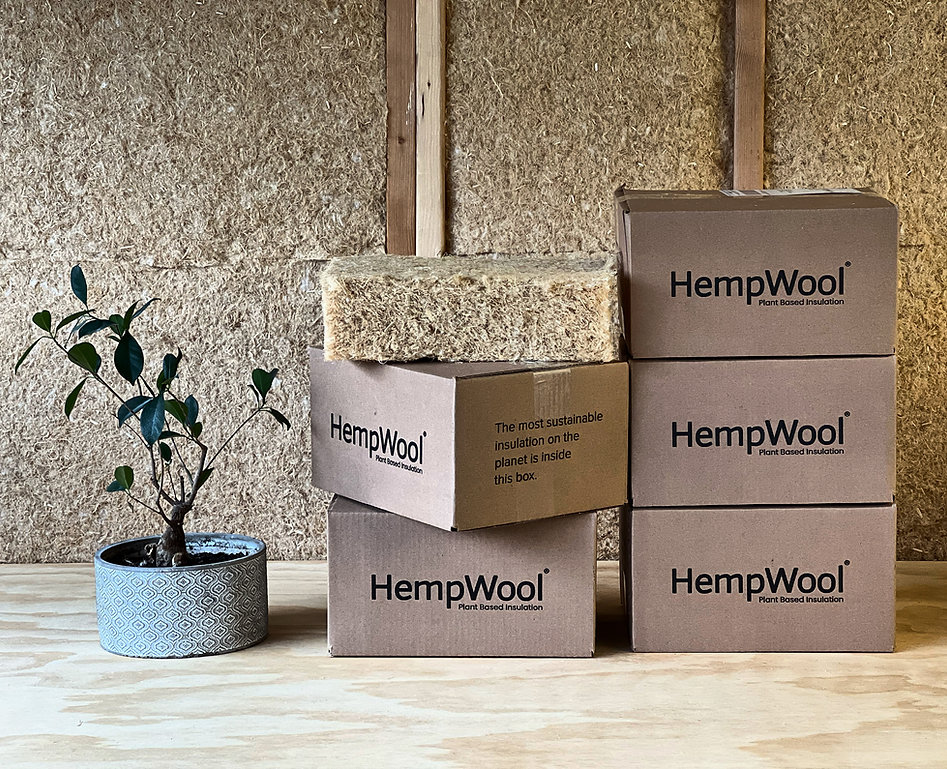
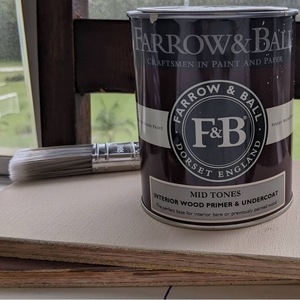
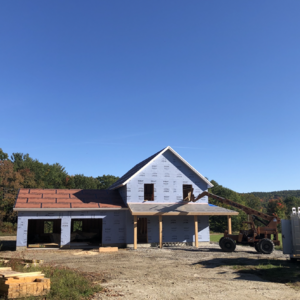
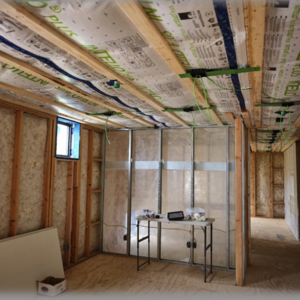
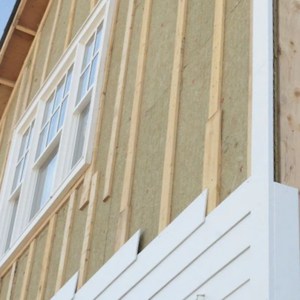






35 Comments
I'm curious what your thoughts are on using lambs wool insulation. It matches the criteria for non-petroleum insulation.
The hardest area to handle is the below grade area.
It doesn’t mention traditional fiberglass. I think anytime you can find second hand foam to use in the place of new rockwool boards, you’re doing the environment a service. And it’s also more affordable.
I'm not sure this article should have made it onto GBA. The thinking is too woolly-headed to be useful.
Malcolm, what does "woolly-headed" mean? While this article is very entry-level, I am grateful for anything that helps show people that there are alternatives to foam, and those looking for alternatives might find this article (and the related links) to be a good place to start.
Michael,
Woolly headed = marked by fuzzy thinking.
It lacks the rigor we have come to expect here on GBA. I don't mean to be picky, but here are a few quick examples:
- "materials and solutions to keep your home airtight and breathable" Assemblies can't be both, it's a binary choice. Perhaps they meant "airtight and vapour-open"? "Air-tight with good indoor air-quality"?
- " if we respond to the desire for increased insulation with petroleum-based products, we overlook a project’s impact on indoor air quality and knowingly contribute to a larger carbon footprint." That's not always the case. Buildings using petroleum based insulation may or may not have poorer air-quality, or a larger carbon footprint than those using bio-based alternatives.
- "When the opportunity to design with a cross-laminated-timber (CLT) system presented itself for a project located in Wilson, Wyoming, we felt it was important to use natural materials in the rest of the assemblies" Why? What is it about using CLT that makes it more important to use natural materials than on other types of construction?
- Straw is described as having an "R-value of 40". Without context (how wide is it, how does it compare to other materials), that's not a useful thing to know.
- Cellulose: "An R-value of 3.5 helps reduce energy bills". All insulation helps reduce energy bills. Again, this simply isn't useful information either in an introductory article, or for high performance enthusiasts.
- Wood fiber: "The flexible fiber boards can be installed on the exterior, without extra cutting necessary, as the edges have a tongue-and-groove style of joining." Wood fiber boards come in a variety of types. The ones that are being described (Glutex) are not flexible. That's why they can be used without cutting so the edges fall on framing members. Or was "flexible" used in some other sense? It's unclear.
And, "Hemp’s dimensionally stable R-value of 5". What is a dimensionally stable R-value?
Malcolm, good points--I initially read the article quickly and missed those details, likely in part due to my own bias toward natural materials, and as a fan of Love/Schack's work. A few responses:
I'm sure that by "breathable" the author meant vapor-open. (Or your weird Canadian spelling ;-) Like you, I prefer the more precise term "vapor-open."
I agree that petroleum-based building products and IAQ are not always in conflict, and using natural materials does not necessarily mean good IAQ.
I think the author explains her thinking regarding CLT in the previous paragraph:
"we’re driven to design Passive Houses with high-performance enclosures using more natural products from renewable sources, and that have lower embodied energy. We aim to provide homeowners with optimal thermal comfort without the massive carbon footprint that a conventional building is responsible for." The logic is implied and not explicit. I would be interested in reading more about why they feel this way.
Straw bales, at least in my experience, are 18" wide, so at R-2.2/in they are R-40. This could have been more clear. There are a few other places where she states R-value that should have been R/in. An additional comment: here in Maine, straw is usually imported from the midwest, no more local than most of the insulation we use. At least that's where the straw I buy for my gardens and farm animals comes from.
Cellulose R-value (per inch): I agree, and it's usually a little higher than that--R-3.6/in for dense-packed and 3.8/in for loose-blown. (I've researched it: https://www.finehomebuilding.com/project-guides/insulation/cellulose-perfect-insulation.) But the R-3.5/in noted in the article is a safe, conservative value.
Wood fiberboard: Gutex and similar products are quite rigid and made from virgin pulp. Maybe the author is repeating the industry line that says wood fiberboard (and OSB) can be made with the slash left after logs are harvested. In theory that is possible, but in practice, from what I understand, both are made with full logs. There simply isn't a practical or economical way to get slash to the factory. Some product lines have tongue-and-groove edges and don't have to break over studs, reducing potential cutting to length, important since their dimensions are metric and not a multiple of 16". (Again, I've researched it: https://www.finehomebuilding.com/project-guides/insulation/284-in-favor-of-wood-fiber-insulation)
Charlie, I agree--dimensional stability and R-value are separate characteristics. Further, I don't know of any hemp product that claims R-5/in; there are many forms of hemp insulation but hemp batts are around R-3.5/in, in the same range as most fibrous insulation.
Re: straw in Maine - There's a small company in Rockland making straw bale assemblies, they use local material, look up Croft Haus
https://www.croft.haus/panels
https://greenmainehomes.com/blog/beyond-the-bale
I am surprised that sheep's wool is not mentioned. I've heard good things about it.
Most of these comments have been edited by the author. That’s sad
jprattimberframe,
I didn't criticize the article to score points. I'd rather it was edited to address its shortcomings, and then became the useful reference I think all of us would prefer.
Malcolm, I think you misunderstood. Someone has edited all of our comments to remove content specifically critical of rockwool. I don’t think the article itself has been edited.
jprsatttimberframe,
I did miss that! This is the second time comments critical of a blog have been edited - and again it involves Rockwool. I'm not sure that's something that should be happening.
Article is sponsored by Rockwool, but Rockwool isn't one of the suggested insulation methods. I didn't see any comments before they were edited, but any would they be talking negatively about Rockwool?
mdhomeowner,
Mineral wool was one of the suggested insulation materials in the original article which has now been edited out, as were the comments referring to it. There was nothing negative in the comments, nor do I think there is anything nefarious going on in the edits, but curating comments - especially on sponsored articles - doesn't seem to me to be something that should be occurring, whatever the intent.
Despite the allegations, I like the article though. I learned about some more niche insulation products and added hay insulation projects to my research.
The original subtitle and section heading were about "bio-based insulation," and the list included mineral wool. Someone rightfully pointed out that mineral wool is not bio-based, so references to it in the article and comments were removed. Rockwool had nothing to do with any of it, before or after publishing.
I think that the editing was actually performed by “Big Straw”, and they did it in such a way as to lead us to believe that rockwool was the culprit....
boxfactory,
I agree. Big Straw is a little understood threat to our democracy!
The one insulation product I would like to see here is wood wool batts ie:
https://www.steico.com/en/products/insulation/insulation-between-studs/flexible-thermal-insulation/steicoflex-036
I've used a bit of this on the other side of the pond and it simple and environmentally friendly way to insulate stud cavities. It is pretty heavy (about 2x weight of mineral wool batts) but still much less work than dense pack.
I agree. I am looking forward to working with the wood fiber blown-in and batt insulation products from TimberHP in Maine. They are promising availability of the blown-in 1st quarter of 2023 and batts in 2nd Q. How available and at what price is still TBD, of course. We'll see.
May I trouble you to write about the advantages of blown in wood fiber, as compared to blown in cellulose?
Thanks!
Ben
Ben, I don't think many people in North America have experience yet with blown-in wood fiber, but once it's here it will be a nearly 1:1 swap for cellulose. Think of it as cellulose that didn't have to get made into newsprint first, and doesn't have the contaminants of recycled newsprint, but has all of the other qualities we like about cellulose.
My understanding is that cellulose insulation is made from the paper on the end of the roll - which has not been printed. So it's not contaminated by ink.
Which reminds me that corrugated cardboard is an excellent garden mulch and helps keep weeds from growing from the seeds in the local spoiled hay we use on the garden.
Sources of paper used to make cellulose insulation vary--some is definitely printed, and some is not.
I thought it was about 80% post consumer waste. I know some builders have complained about finding contaminants like pieces of plastic from the recycling stream.
I just saw this on their website, but have no idea how well vetted the claim is:
"Closed cavity applications can be installed at lower densities without risk of settling"
And then,
"Shape and size of fibers prevent issues with settling, reducing voids and air pockets"
If I'm reading their spec sheet right it looks like they have lower reccimended densities than cellulose.*
*edit, actually not sure that's true, but it looks like they imply 3 pounds cu. ft. Foe thwir product. I wonder if they will have an official suggested density that will differ from cellulose.
One other point to make about cellulose is that the source material (meaning newsprint) could conceivably dry up in the future. So could saw waste, but seems less likely.
Malcolm, I had researched it thoroughly for an article a few years ago and found that most manufacturers use 80-85% post-consumer newsprint, but that some use primarily post-industrial newsprint (aka pre-consumer).
If it turns out to be true that blown in wood fiber can be installed at lower densities in wall cavities, I would be interested. I am currently having trouble finding a rental machine for dense pack cellulose with more power than the big box store model. Perhaps if one were to substitute loose wood fiber, the options for machine rental would improve. If Timber HP gets up and running before the spring, I would seriously consider blown in wood fiber.
Thanks!
Ben
I've written about this many times here, but I used one of the big box stores' rental machine and was able to make it work. I'm always afraid of sounding like a broken record on this subject so I won't repeat many of the details to avoid boring people. The machine puts out about 3.1 to 3.2 lbs per cubic foot. It isn't enough on its own to fill a 2x6 wall to 3.5 lbs/cubic density which is the consensus minimum required that avoids the cellulose slumping over time. "However", I packed it behind insulweb, and not through holes in drywall, which won't work with that blower. I accomplished that density by getting the cellulose to belly pretty far out behind the flexible Insulweb and then using a roller to then make it flush with the framing.
I don't know if that would work for your situation. I'm confident in my installation density calculations. After subtracting for doors and windows the formula I used was the (length of all walls) x (height of walls) x (thickness of 5 1/2") = volume of filled area. Don't forget to subtract at least 20% of that for the stud framing factor. Then count the empty bags of cellulose you used and multiply times the original weight of each bag. You then divide that number by the volume you previously calculated. That gives you the total lbs/ cubic feet. Mine came out to 3.6 lbs per cubic foot from a blower that supplied only about 3.2 lbs per cubic foot pressure. It only works for a blower in good working order into a flexible mesh like Insulweb. Don't try it for a hose snaked into a rigid wall. I don't know if that would work for your situation.
Thank you for the detailed reply. I’m sure you repeating yourself has helped a number of people, both those for whom you were directly answering questions, and the people that have since read the discussion. As you describe, I plan on counting the leftover bags to double check my work, but I probably would not have deducted the volume of the studs, so you have already saved me some trouble.
Perhaps I should have mentioned this, but my plan is to use double stud walls, and my current understanding is that one needs to upgrade their blower with thicker walls.
Similar to your install, my plan is to use Insulweb on the face of the wall, though I think I’ll also use it across each individual stud bay to increase my chances of success (along with a lot of work I’m sure). As I understand it, the common practice is to go across 3 bays at a time.
Much appreciated,
Ben
No problem. I see why you'd need a more powerful blower than i used for a double stud wall. If it's still possible, perhaps it isn't, dividing the double wall with a rigid board in the middle might be an answer. You could then blow through insulweb from both sides. I wish you success whichever way you go.
Exeric - I like how you did this. Qq- what roller did you use to compress the insulation? I googled the results were all paint rollers…
Here's one: https://jrproductsinc.com/product/wall-roller/
I got mine from jrproducts years ago that cost about a third of what the one above cost. I don't think mine is as good as the new one. There are cheaper DIY solutions out there. Check out this thread:
https://www.greenbuildingadvisor.com/question/dense-pack-cellulose-roller-where-to-get-one
Log in or create an account to post a comment.
Sign up Log in